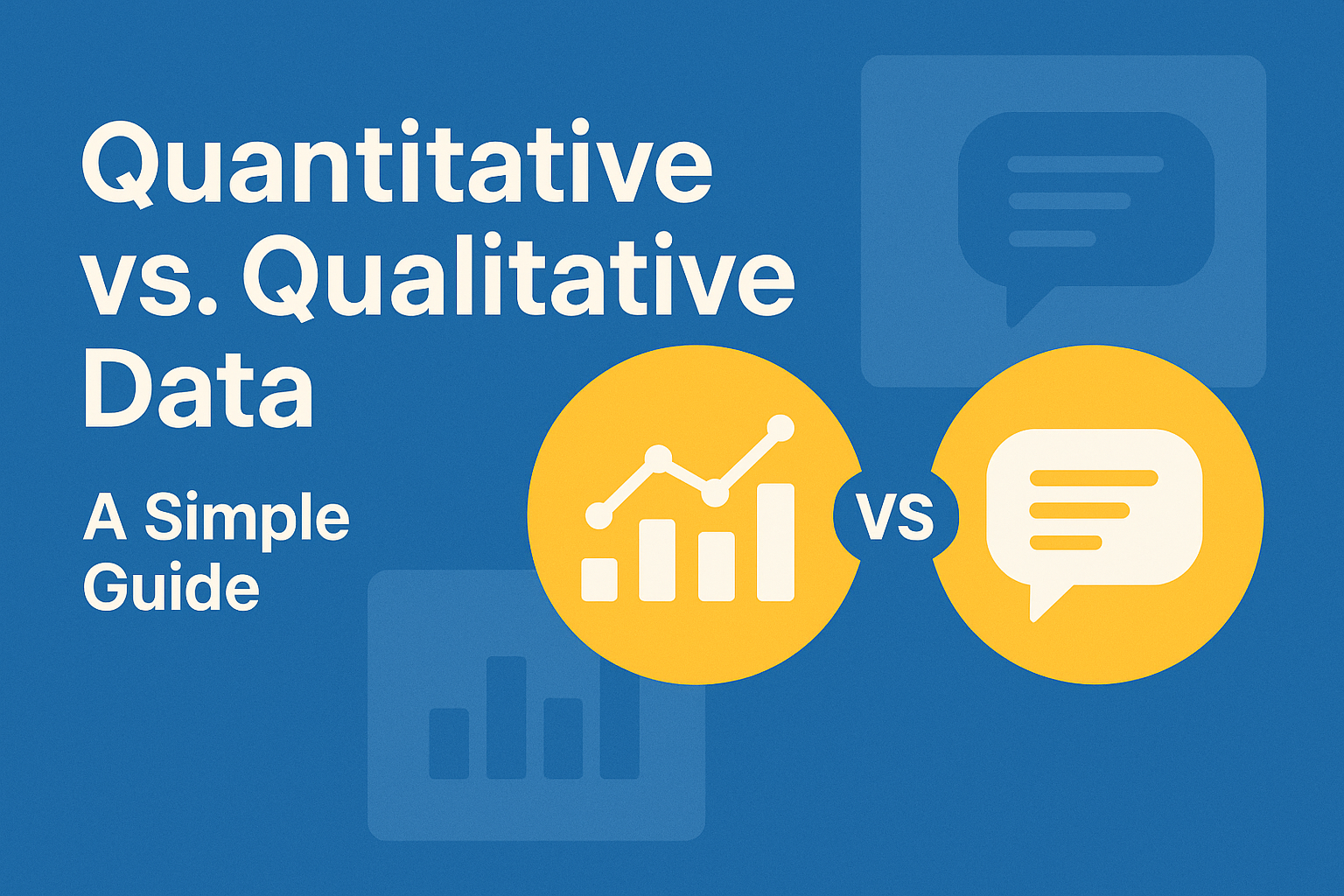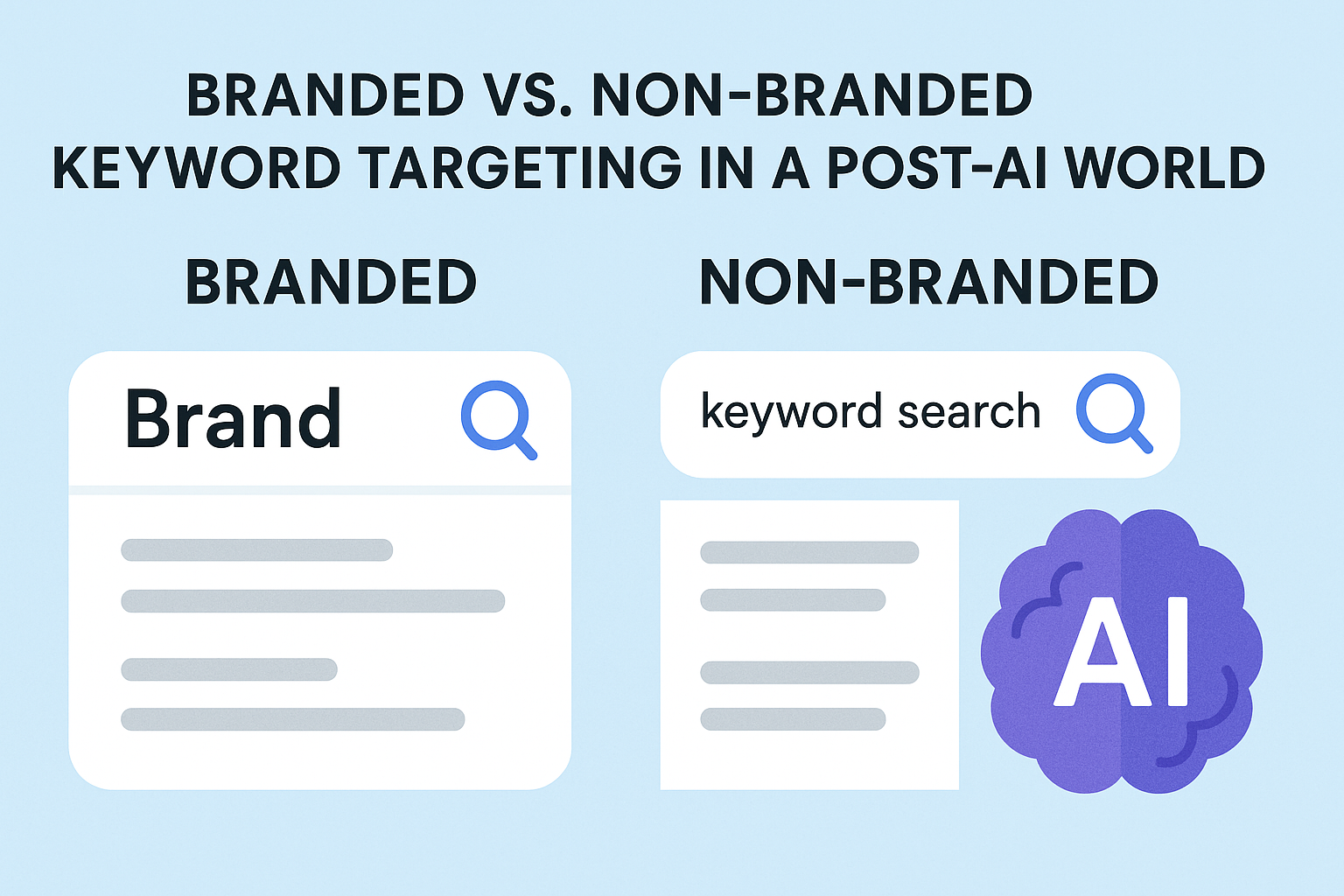When it comes to research, data is a powerful tool. But not all data is the same. Quantitative data deals with numbers and statistics, giving you objective, measurable results. Qualitative data focuses on descriptions and meaning, providing in-depth insights into experiences.
Understanding the difference between these two types of data is crucial for any research or business strategy. This guide breaks down quantitative and qualitative data, explaining what they are, how to collect them, and how to use them effectively.
What is Quantitative Data?
Quantitative data is information that can be counted, measured, or expressed in numbers. Think of it as the “what,” “how many,” and “how often.” It’s the data you get from surveys, statistics, and reports that show patterns and trends.
The goal of quantitative research is to get a clear, objective picture. By using numbers, you can test a hypothesis, find cause-and-effect relationships, and make predictions. This makes it a go-to for fields like science, finance, and engineering where precision and reliable results are essential.
How it’s Collected and Analyzed: The GA4 and Search Console Example
In the world of web analytics, tools like Google Analytics 4 (GA4) and Google Search Console are excellent sources of quantitative data.
Google Analytics 4 (GA4): This tool provides a wealth of numerical data about user behavior on a website. Metrics like page views, sessions, engagement rates, and conversion counts are all examples of quantitative data. You can see precisely how many users visited a specific page or the percentage of users who completed a purchase. This data helps answer questions like, “How many users came from social media this month?” or “What is the average time a user spends on our blog?”
Google Search Console: This tool provides a different set of metrics about how your site performs in Google Search. The “Performance” report offers key quantitative data, including clicks, impressions, and click-through rate (CTR). You can see exactly how many times your website appeared in search results and how often users clicked on it.
Examples of Quantitative Data
- Business: Monthly revenue, customer retention rates, or the number of products sold.
- Marketing: Website conversion rates (from GA4), email open rates, or the number of leads generated by a campaign.
- Education: Test scores, student attendance rates, or the number of students enrolled in a course.
What is Qualitative Data?
Qualitative data is descriptive and non-numerical. It’s all about context, feelings, and experiences—the “why” and “how” behind the numbers. This data is subjective and rich with detail, helping you understand complex situations and human motivations.
Qualitative research is essential when you need to dig deeper than what a number can tell you. It provides a nuanced understanding of people’s behaviors and beliefs, which is invaluable for developing new products, improving customer experience, and shaping branding strategies.
How it’s Collected and Analyzed: The Search Console Example
While most of Search Console’s data is quantitative, it can also provide clues for qualitative research.
- Google Search Console: The “Queries” report shows you the exact search terms people used to find your site. While the number of clicks and impressions for each query is quantitative, the queries themselves offer rich qualitative insight. A query like “best running shoes for flat feet” doesn’t just show a search count; it reveals the specific intent and problem the user is trying to solve. Analyzing these queries can help you understand your audience’s needs and create content that directly addresses them.
Examples of Qualitative Data
- Business: Customer testimonials, feedback from product usability tests, or notes from an employee interview.
- Marketing: User comments on a blog post, transcripts from a focus group about a new ad campaign, or video recordings of a user navigating a website.
- Education: Student feedback on a new learning program, notes from observing a classroom, or teacher interviews about a curriculum.
Key Differences: Quantitative vs. Qualitative
| Feature | Quantitative Data | Qualitative Data |
| Purpose | To measure, test a hypothesis, and find cause-and-effect. | To explore ideas, understand experiences, and discover underlying reasons. |
| Type of Data | Numerical (e.g., stats, percentages, numbers). | Descriptive (e.g., words, stories, observations). |
| Collection Methods | Structured (e.g., surveys, experiments, analytics). | Open-ended (e.g., interviews, focus groups, observations). |
| Analysis | Statistical analysis to find patterns and trends. | Thematic analysis to identify common themes and categories. |
| Focus | How many, how often, how much. | Why, how, what is the experience like. |
Using a Mixed Methods Approach
The most powerful research often comes from combining both quantitative and qualitative data. A mixed methods approach gives you the best of both worlds: the objective reliability of numbers and the rich context of human experience.
For example, combining GA4 and Search Console with user feedback is a powerful mixed methods approach. You might use Search Console to discover that a particular blog post has a low CTR despite a high number of impressions (quantitative data). This tells you there’s a problem with the title or meta description. Then, you can use qualitative feedback—like a user survey or a small focus group—to find out why the title isn’t appealing. The feedback might reveal that the title is confusing or doesn’t accurately reflect the content. By addressing this, you can improve the quantitative metric (CTR).
How to Avoid Bias
Regardless of the type of research you’re doing, minimizing bias is critical to getting accurate results.
- In Quantitative Research: Use random sampling to ensure your sample group is representative of the larger population. Double-blind studies, where neither the researchers nor the participants know who is in the control group, can also prevent biased results.
- In Qualitative Research: Triangulation—using multiple data sources, methods, or researchers—helps confirm your findings. Reflexivity is also key; researchers must reflect on their own biases and assumptions to ensure they don’t influence the analysis.
The Role of Technology in Data Analysis
Technology has made analyzing both quantitative and qualitative data faster and more efficient.
- Quantitative Tools: Software like SPSS and R are used for statistical analysis, allowing researchers to quickly process large datasets and create visualizations.
- Qualitative Tools: Software such as NVivo and ATLAS.ti helps organize and code non-numerical data like interview transcripts, making it easier to identify themes and patterns.
These tools save time and improve accuracy, allowing researchers to focus on interpreting the data and drawing meaningful conclusions.
Frequently Asked Questions
What are the main differences between quantitative and qualitative data?
Quantitative data is numerical and used for statistical analysis, while qualitative data is descriptive and used for understanding context and motivations.
What are some common methods for collecting qualitative data?
Common methods include interviews, focus groups, and observations, which all provide in-depth insights into human experiences and perspectives.
Why is it beneficial to integrate both data types?
Combining both quantitative and qualitative data provides a more comprehensive and holistic understanding of a topic. It allows you to use objective numbers to identify a problem (like a low conversion rate in GA4) and then use descriptive insights to understand the reasons behind it (from user surveys or feedback).

The Search Engine Cage team is on a mission to educate entrepreneurs. We make things easier for the small business owner, by writing articles that help them to understand SEO and Digital Marketing.






